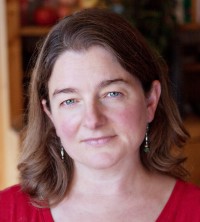Illuminating the ordinary
This week we have a bonus lectionary post, which is cross-posted at Journey With Jesus. We'll put up another Transfiguration post tomorrow.
Learning to see in new ways is one of the most difficult tasks of the transformed life. Old habits of selective vision, old choices about what to leave out and what to focus on tend to dominate us, even as we search for new ways of living that are in closer communion with the life of the Spirit. Transfiguration--that mysterious transformation of vision that is narrated in today's readings--is a radical, if brief, way of illumination.
The disciples go with Jesus to the mountain--a place out of their ordinary environment--and there, they are able to grasp, for a moment, a transcendent reality that lives just beyond their normal capacities. In Annie Dillard's essay "Seeing," she recounts the experience of people who had been blind at birth, but had received sight thanks to a restorative surgery. To begin to see the world, the newly sighted had to reconcile preconceived notions of the world with objects, colors and distances. Even with this radical new gift, it was easy to get the meaning of what they were seeing wrong. This suggests a spiritual kind of sight as well as a physical--that a person having received a radical new gift might struggle, like Peter in today's Gospel, to understand precisely how to use it.
Transfiguration might be about learning to see ordinary things in extraordinary ways. In a poem from Christian Wiman's new collection, Every Riven Thing (2010), he addresses transformed sight. The poem is called "From a Window" and can be accessed here.
Wiman, who has described coming to Christianity as "color slowly aching into things, the world becoming brilliantly, abradingly alive," begins the poem in a reduced state, a state in which he is unable to believe in anything, except what he calls the "truth of grieving." Seeing the truth of grieving is ordinary for him, an old habit, and he is stuck inside it. Looking out his window, he sees something that at first appears impossible: "a tree inside a tree/rise kaleidoscopically," as if leaves hidden inside the seemingly barren tree had suddenly taken flight. He feels, in a moment, like he is seeing the spirit of the tree, like he can see beyond it. "Of course," he writes, he knows the tree is just a tree, and that the "leaves" are birds suddenly taking flight.
And yet the event changes his perception. The ordinary world is fuller, more real, endowed with some "excess/of life." He understands that he is participating in the creation of this image, that his mind has helped to create a transfigured understanding. But he resists the idea that this is a sufficient explanation for what he has seen. Instead, he says, the life perceived through the tree and birds is larger than he is and is connected to the holy. When he recognizes this series of connections, he experiences joy. His perspective has shifted--the limits with which he begins the poem have become something else entirely.
Today's New Testament reading alludes to the provisional and yet transformative nature of this kind of sight. "We did not follow cleverly devised myths," the epistle writer asserts, but something more concrete, something the disciples saw with their own eyes, something that kept them from the blindness and nearsightedness that traps Wiman at the start of "From A Window." Despite the instability of their vision on the moment, the disciples believe it is reliable. They urge their followers to hold on to this way of seeing, this light, attentive to it, as "to a lamp shining in a dark place, until the day dawns and the morning star rises in your hearts." We begin with the provisional, the momentary, the fragmentary, and reach toward a fuller perception of light.
As we move between the extraordinary accounts of Transfiguration in today's readings and the ordinary events of seeing in our own lives, we do not need to collapse the two. But we can remember, with Peter, that the light of God is not so hidden that we cannot seek it in ordinary life. The Logos lives, enlivens, infuses, illuminates even the ordinary.
For further reflection:
- Are there times when you feel like you see sacred reality better or worse?
- What are the connections between the sacred and the profane, the ordinary and the extraordinary, in our everyday lives?
- Are there ways we can improve our vision?
- How and why do we remain stuck (Wiman) with limited vision?






